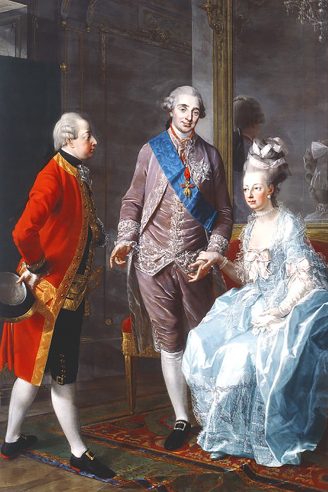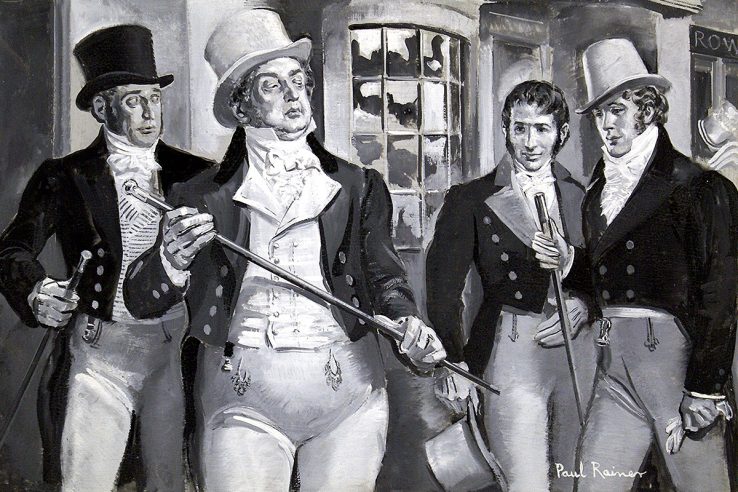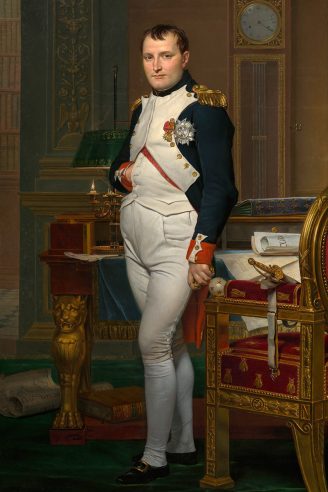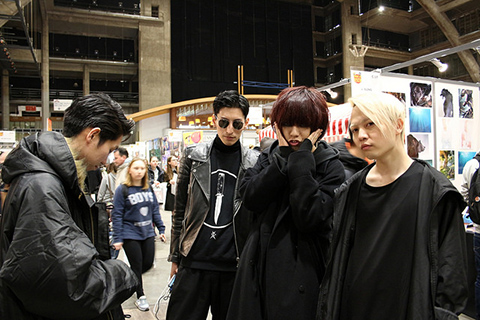You sir, yes you. Take a look at your fine wardrobe and the styles you hold dear. Those of the elegant, refined, understated gentleman. A far cry from the powdered wigs and scented noblemen whose influence, without our Beau, would have dominated the fashions of Europe — and thus the world — for many years longer than they have done.
The 1700s were a time of wealth. On the continent and in Britain, the nobility showed its flare with ever greater demonstrations.
A prime example of this is the decadency of the French royalty in the guise of Louis XVI, who was advertised as such a tyrannical arch-degenerate that it cost him both his crown and his head to a revolutionary mob. (Despite his actual character as probably a fairly decent chap.)
From the gold-leaf extravagance of the Palace of Versailles to the towering powdered wigs of lords and ladies, the seventeenth and eighteenth centuries were times of showing off, but this had always been the case. Ancient kings and emperors had worn their riches in full display. But the increasing wealth of the eighteenth-century aristocracy was so much flaunted that it was driving an ever-firmer wedge between rulers and their people.
Let us take a closer look at these pre-Brummell styles, before we meet the man himself.
Renaissance-style

Your eighteenth-century gentleman, or fop, as he would later be characterized, has changed since the Renaissance, but not much. Indeed, in this way he reflects the politics and society of the time of absolute monarchs. He wears stockings and buckle (thought sometimes bowed) shoes, his hair is long and, as he has time on his hands, elaborately curled, though for ease of maintenance this style was often replaced with a lice-infested and powdered wig in later years.
This gentleman is a cut above his serfs and the lower echelons, which he advertises with rich garments of velvet and silk. Large breaches, preferably with shiny bits are the leg wear of choice down-to-the-knee, above your stockings.
To show off one’s upper half, there are a myriad of brightly colored waistcoats and long frock coats. White is still a sign of purity at this time, and also shows that you do not have to work and get your clothes dirty. Purple and deep reds are signs of royalty and prestige as the dyes used in their production are expensive and rare.
Imagine if you will the gentry featured in such films as Rob Roy, Pirates of the Caribbean and The Three Musketeers, an excellent example being Leonardo DiCaprio’s portrayal of King Louis in The Man in the Iron Mask.
Revolution
So how, you may wonder, does all this extravagance and bling disappear so quickly, to be out of fashion by the end of the Napoleonic wars? I put it to you that this is somewhat political.
With revolutions racking the continent of Europe and even the Americas, a statesman or nobleman, seen to be so rich so as to spend hundreds of pounds on needles foppery, would not go down well with the starving peasants. The French revolutionaries certainly derided their social betters for their looks. In the Americas, the European nobleman, painted and with powdered wig, provided the complete antithesis for the lifestyle of downtrodden frontiersmen, keen on hard work and down-to-earthiness. So it can be presumed that it was quite dangerous even, for a chap to walk through the less stable parts of his own city in these revolutionary times for fear of assault.
Although you may think of this as only a sideline cause for the change in men’s fashion, the politics of the era had as much to do with it as they did in the 1950s and 60s, when suits and hats became symbols of the old and authority, leading to the T-shirt and jeans wearing of almost everyone these days.
Out with the wigs
Now we meet Beau Brummell and his influence, one which many people have forgotten and take for granted. An influence which has, and will go on to last, for hundreds of years. Unless you are wearing stockings or, for some reason, sir, a skirt at the moment, chances are you are wearing his legacy: the trouser. (Or, if you are American: pants.)
George Bryan “Beau” Brummell was born in 1778, at a time when the old order of the absolute monarchs, made incredibly rich during the Renaissance, was being threatened by revolution both in the Old and New World.
Something evidently had to be done, before Hyde Park was renamed “The Peoples Quadrangle of the Bloody Struggle” and various earls and dukes removed of their heads. The ultimate reaction was war with the revolutionaries.
Enter Napoleon Bonaparte. It is worth mentioning that the emperor (terribly afraid of cats, you know) has some bearing on our topic. Looking at pictures of the petit corporal, you might take care to look at his hair. It is rather short, close-cut, almost Roman. This is a direct affront to the powdered wigs of those he had witnessed meeting Madame Guillotine. It suggested a man of the people, the people who, of course, could afford no such grand wigs as the aristocracy.
Indeed, the French followers of Brummell’s diktat, although rich and idle like the Ancien Régime, were heralded as a great change for both their stylistic differences as well as their contempt for the bourgeois lifestyle, which they believed themselves above. The old style was on the way out. Prime Minister William Pitt, while needing money to fight the French, levied the 1795 Powder Tax (effectively a wig tax) on the British aristocracy. The vacuum, however, would need to be filled.
Dandyism
This was the rise of dandyism. Whereas long pantaloons had existed among the working classes in one way or another for hundreds of years previous, they had never entered fashion. They were purely utilitarian, worn by peasants. Dandyism brought refined, simple, understated dress to the upper classes, a task which was brought about mostly and most famously by Beau Brummell.
By the time of the Powder Tax, he had already done away with his wig and opted for the Roman cut, à la Brutus. He was however, not a self-made man, like many of the men, both French and British, who would follow his ways. He had inherited much money from his father, a political secretary, and attended Oxford University.
Unlike the French bohemians who embraced the look of the dandy as the counter-fop, Brummell was far more ready to court royal favor, befriending and indeed reforming the Prince Regent, later King, George IV, who although often depicted like his mad father, wearing a wig and grand coat, often sported dandy-like Regency fashion of black suit and trousers. This is where dandyism blooms and how it should be remembered.
Brummell dressed immaculately. It was said he spent over five hours dressing. The result was a study in perfection. Not a hair out of place. Unlike the fops (who were quickly developing into a rival subculture, much like mods and rockers of the sixties) dandies bathed; they did not use scent to cover up their body odors. They believed in reserved, understated but thread-perfect clothing of dark suits, dark blue or black overcoats and another great element; the cravat, the direct predecessor to the modern tie. So, with dark trousers, matching waistcoats, jackets and morning- or frock coats, topped off with a tie, Brummell and his dandies created the suit of the suit.
This style of dress, dandyism and the refined, modest and yet unpretentious manners and customs, which went hand in hand with the reserved dress, would dominate the world of fashion and style for the rest of the century and beyond.
Popularity
At the time, it took Europe by storm. It effected the celebrities of the day, such as King George, noted earlier, and George Gordon Byron, who rubbed shoulders with Beau and was one of the dandies of his time. Byron, in turn, influenced the famous Alfred Guillaume Gabriel, the Count D’Orsay. Joachim-Napoléon Murat, King of Naples, the famous cavalryman, was another influential dandy.
Although these military and royal figures had uniforms, medals and other tin wear to liven up their clothes, the influence of Brummell is evident in portraits of the era. The great soldier, Sir Arthur Wellesley, Duke of Wellington was clearly a follower of the fashion, often wearing a simple blue coat, his hair cut in the short Roman style and, like Brummell, displaying many inches of perfectly washed and pressed linen.
Unfortunately for Brummell, always on the edge of the more steadfast rules of respectable society, he lost favor with the king over an insult intended to be comical. The king, already dissatisfied with Brummell’s leaching and sponging and apathy for any serious matter outside his own appearance, ignored him from then on.
Without the royal protection from his creditors, Brummell was forced into bankruptcy and fled to France. There he enjoyed a time of modest luxury as a petty provincial politician before dying in a sanatorium in 1840, in Caen.
Legacy
Whatever the fate of Beau Brummell, his legacy is seen all around us in the reserved men’s fashion which both dominated the nineteenth century and persist to this day in the form of all suits, smart trousers and ties.
The quality of cut, always one of the key points of the dandy’s suit, survives today in the men’s tailors of Savile Row and Jermyn Street and the many other bespoke and tailored gentleman’s outfitters all over the world.
Dandyism, with its demands of perfection of smartness and quality may have diluted somewhat since the early nineteenth century, yet the concept has existed since in the form of the well-dressed gentleman, from James McNeil Whistler and Oscar Wilde to Noël Coward and Andy Warhol and even, I dare say, you: the suit-wearing, smart-dressed chap; you, the steampunk gentleman.
This story first appeared in Gatehouse Gazette 3 (November 2008), p. 3-5, with the headline “Beau Brummell: The Most Stylish History Maker”.









1 Comment
Add YoursThis was a most charming and delightful read! Even though American, I felt compelled to read it aloud to myself with a studied English accent, of course! I also now perceive my frame to have straightened from its slump adding inches to my previous height. Well done author!